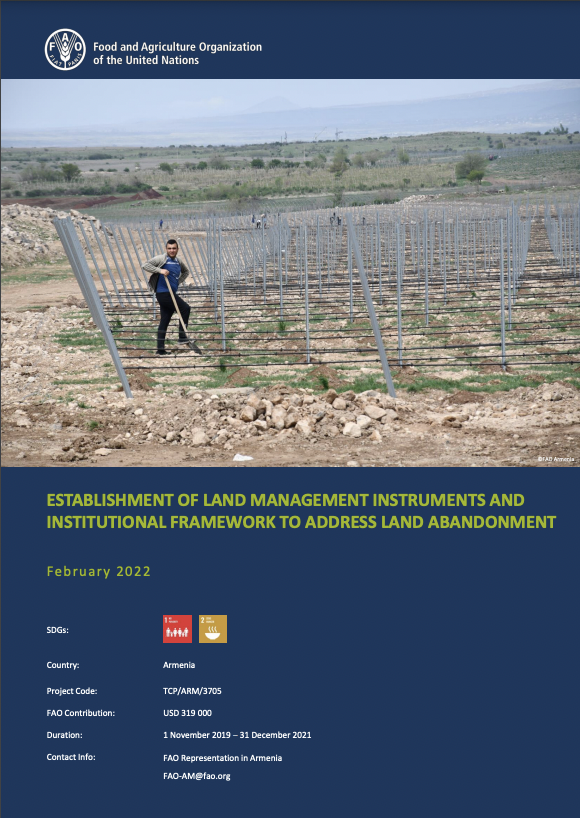Resource information
The agricultural sector in Armenia contributes around 20 percent to gross domestic product and provides employment to around 40 percent of the country’s labour force. The backbone of agriculture in the country is represented by smallholders and family farms. According to 2014 census data, 317 346 family farms contribute over 97 percent of the total agricultural output and comprise 99 86 percent of all active agricultural holdings. As a result, agriculture in the country is mostly at subsistence and semi subsistence level, with low productivity and competitiveness in global, regional and national markets. Land fragmentation and small average farm sizes are key constraints to agricultural transformation In 2014 average farm size was 1 48 ha for farms without legal status and 62 57 ha for farms with legal status. In addition, according to the Agricultural Census 2014 an average 33 percent of arable agricultural land belonging to holdings without legal status and 38 percent of that of holdings with legal status is abandoned. Land abandonment has many root causes, including inefficient farm structures, an aging rural population, migration, the dependence of agricultural production on water and the unavailability of irrigation facilities.


